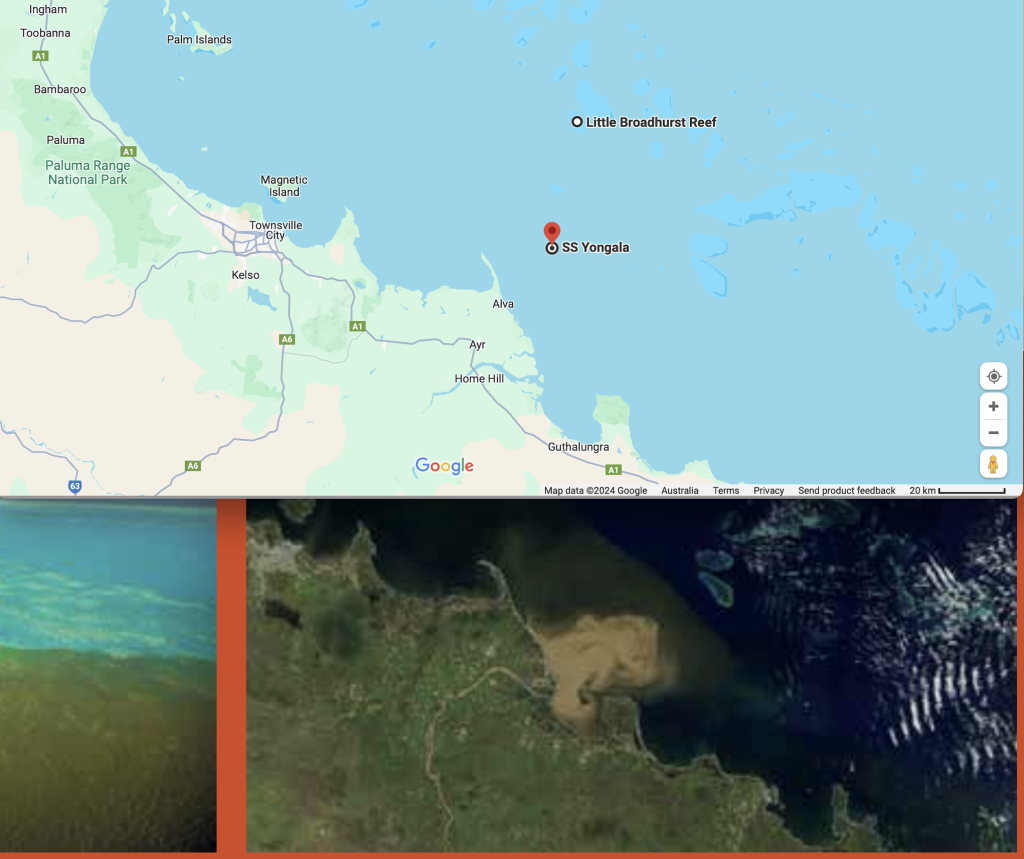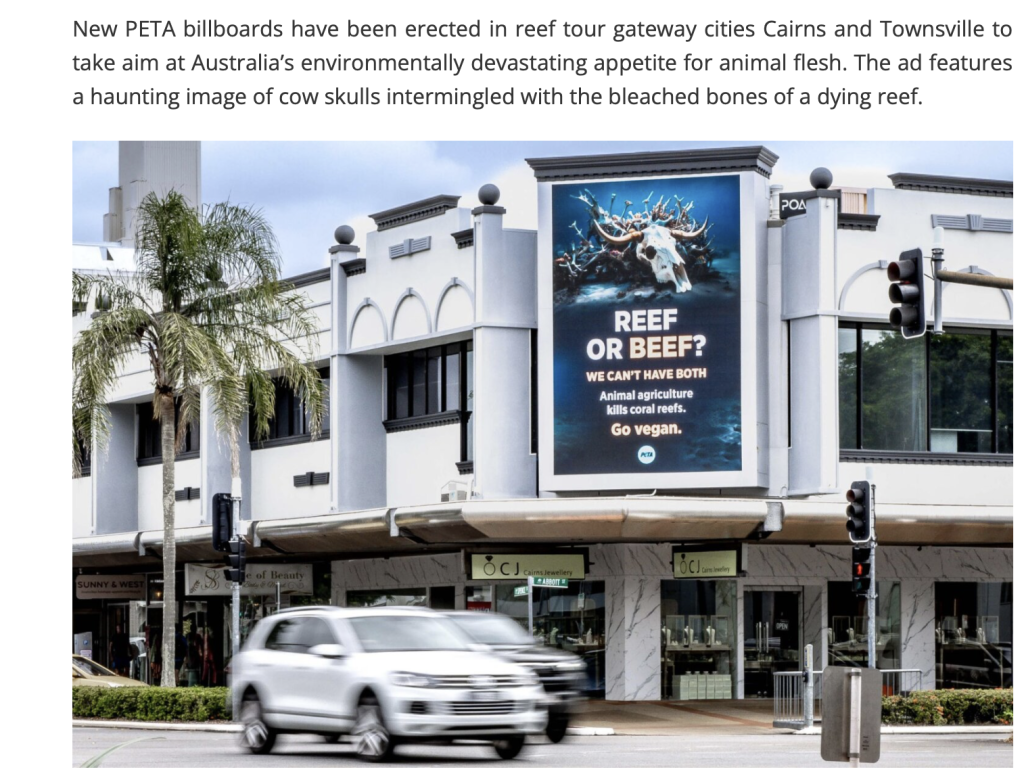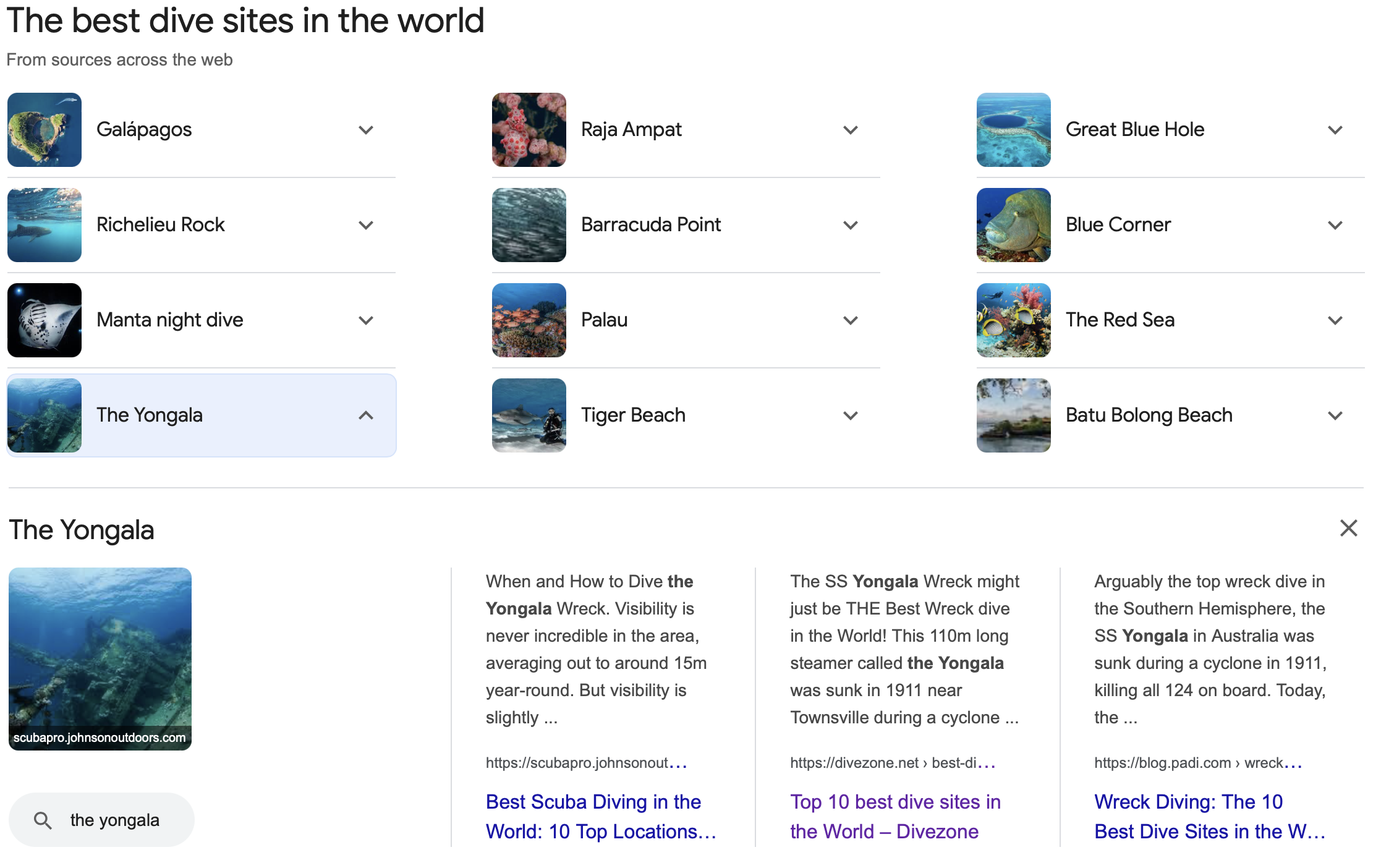Misinformation abounds when it comes to the environment – and what makes it tick, especially at the Great Barrier Reef. There is this mantra, this insisting from some that there is no impact from agriculture – while there is this mantra, this insisting from the mainstream institutions and most recently a Peta campaign that agriculture is killing the same Great Barrier Reef.
Never have I heard anyone mention in the same breath the fishes of the Yongala historic shipwreck and its proximity to the ‘highest exposure levels’ of nutrients and sediments attributed to agricultural runoff.
In the most recent ‘Great Barrier Reef Outlook Report’ (2019) there is a focus on the Burdekin River, and how the coral reefs in this region to the south of Townsville are suffering terribly because of agricultural runoff with specific mention of Stanley and Darley Reef. Even closer to the mouth of the Burdekin River, in fact in the direct path of river flood plumes, is the Yongala – regularly listed as one of the best dive sites in the world.

According to information at the AquaProDive website, the wreck of the SS Yongala is considered one of the best wreck dives in the world and arguably a must-see dive if coming to Australia. The same website explains that the wreck is in a remote location, which is just not true.
The Yongala Shipwreck is a 110m long former steel passenger and freight steamer which sank during a cyclone on March 23rd, 1911, with the loss of all 122 people aboard. It was not until 1958 that the wreck was first dived and due to its remote location, it has remained mostly untouched. The wreck begins 15m below the surface and extends down to 30m. Since it is the only large reef structure in the region, a huge variety of marine life gathers at the wreck creating Australia’s best dive site. She lies on her Starboard (left) side.
The Yongala sunk not far from the mainland, and not far from the mouth of the Burdekin River that drains a catchment replete with sugarcane and beef cattle.
It is arguably one of the ten best dive sites in the world, known not for its reliably good visibility but rather its super-sized marine life.
The wreck of the S.S. Yongala is a truly spectacular dive. Some claim it to be one of the top ten dives in the world. The Yongala’s size, structural integrity and proximity to Townsville alone make it exceptional locally, but it is unique because of the fish community that makes the Yongala its home base. The sheer abundance, variety and large size of predators (especially snappers, cods and trevallies) is extraordinary on the Great Barrier Reef. I have seen nothing like it elsewhere …
I am quoting from the foreword of a technical report by the Australian Institute of Marine Science and the Queensland Department of Environment and Heritage. The joint study measured the uniqueness of the Yongala fish community by comparison to similar shoals in the area. It also documents the stability of fish numbers and composition over a significant period.
I’ve never seen such a large turtle. I knew Queensland groupers were large, but seriously, at the Yongala. Māori wrasse they are big fish, and the Māori wrasse I saw at the Yongala a month ago today was longer and stockier than me, though that blog post was mostly about the giant stingrays.
I’m not advocated for more agricultural runoff. I’m not in favour of more nutrients and sediment into the waters of the Great Barrier Reef. But I am drawing attention to the paradox that is the SS Yongala wreck: an unusually high concentration of fish both exceptionally large and such species diversity, all in very close proximity to a catchment with so much Queensland agriculture.
ADDITIONAL INFORMATION
That report is ‘Fishes of the Yongala’ by Hamish A Malcolm et al. 1999
Dive site rankings that mention the Yongala:
“Best dive site in the world
https://divezone.net/best-dive-sites
“One of 10 best wreck dives in the world
“Some tough choices were made to narrow this list down to 11, but we believe these sites offer the best diving in the world – all within Queensland’s borders…. And first listed is the Yongala
Peta billboard, screen shot from website here – and if someone would like to get in touch with Peta and find out if anyone at the organisation has ever visited the Great Barrier Reef, as in got into the water. I would be happy to take them to the S.S. Yongala.



 Jennifer Marohasy BSc PhD is a critical thinker with expertise in the scientific method.
Jennifer Marohasy BSc PhD is a critical thinker with expertise in the scientific method.

Jennifer there is something that the ‘experts environmentalists all seem to miss. The agribusiness sector and farmers in particular are frugal, especially with expensive fertilisers. These days with drill seeding. precision fertiliser. chemicals application and crop rotation it is a reasonable hypothesis that the runoff from Burdekin farms would be a lot less than it was before modern farming practices were widely adopted.
The above related only to farm inputs of fertiliser. During a flood event soil and vegetation in varying degrees of decomposition do get washed into the sea and this has been happening for millennia well before farming. Soil and vegetation is full of nature; fertiliser so the accusations by environmentalists that runoff is destroying the reef is fundamentally flawed in my view.
That should read “Soil and vegetation is full of natural fertiliser”
To my knowledge, there is still no ‘official’ acknowledgement of the influence of volcanic aerosols carried by the Earth’s Axial Spin via volcanic activity, (from especially Indonesia) – and deposited as Acid Rain over the Great Barrier Reef, (due to the uplift effect of the Great Dividing Range.) This must surely affect sensitive corals, (some, more than others.)
Agricultural runoff would(on the other hand,) have minimal effect on corals, (up to70 kms from the coast) – and instead, have more tendency to ‘feed the fish’.
Great work Jennifer and and a pity wecannot get mainstream media to post this sort of news rather than the greenie untrithful claims.
The references you provide are very old. Do you have anything more up to date? Something with data and formal scientific analyis?
Thanks Bill.
I agree that fish report is from a while ago — 1999. It would be great to have an updated assessment of the fishes of the Yongala. It shouldn’t be that hard to do, but it will require AIMS/GBRMPA/Department of Environment folk getting back in the water at the Yongala and doing some more counting.
My guessing is that they will come out with another outlook report soon, https://www2.gbrmpa.gov.au/our-work/outlook-report-2019
As regards the flood plumes, they come in cycles.
Diving the Yongala, just a month ago, and for the first time, it was so impressive. I’d heard the stories — about the abundance and size of the fish. I learnt to Scuba dive on the HMAS Brisbane Wreck, and was imaging something similar. But at the Yongala, a month ago, consistent with the stories, everything was that much bigger and there was so much more. :-).
It shouldn’t be that hard to put in place an ongoing monitoring program, given all the monies given including to the Great Barrier Reef Foundation.
Yongala is resting on it’s starboard (right)side, not port (left). Terrific marine growth on her.